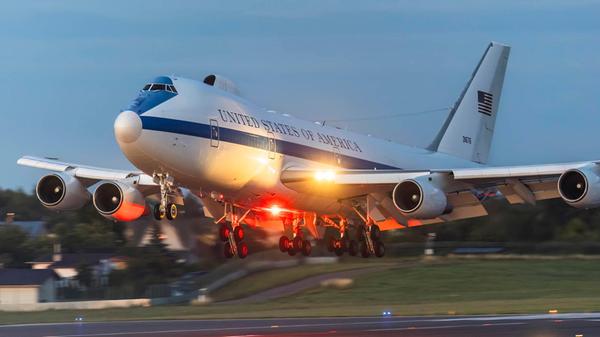
On June 17, 2025, shortly before 6:00 PM (local time), a Boeing E-4B Nightwatch took off from Barksdale Air Force Base in Louisiana and landed about four hours later at Joint Base Andrews near Washington, D.C. This occurred just a few hours after a crisis meeting regarding the situation in the Middle East had been held in the White House's Situation Room. The flight was not secret, but it was far from ordinary, as the aircraft did not take a direct route. Instead, it made a conspicuous loop along the U.S. East Coast, circling the border between Virginia and North Carolina. Moreover, the plane bore the unusual call sign "ORDER01"—instead of the usual "ORDER06." This call sign is typically used only for particularly high-level or symbolic missions and is considered an indication that the flight had special strategic importance—such as the preparation or assurance of a possible military intervention. Amid escalating tensions between the U.S., Iran, and Israel, the flight seemed like a quiet yet clear signal: the U.S. is preparing for a potential crisis.
The Boeing E-4B is no ordinary aircraft; it serves as the airborne backbone of the U.S. command and control structure in times of crisis. Officially known as the National Airborne Operations Center (NAOC), it is often unofficially referred to as the "Doomsday Plane" or "flying Pentagon." Its mission: to remain operational even when everything on the ground has ceased to function - such as in the wake of a nuclear attack, a massive cyberattack, or a widespread power outage.
Globally, only four of these aircraft exist. They are based on the Boeing 747-200 but have been extensively modified: equipped with redundant communication systems, satellite links, conference rooms, sleeping quarters, a fully equipped crisis center, and defensive systems to guard against missile attacks.
Notably, the protection against so-called electromagnetic pulses (EMPs) is particularly striking - a threat that plays a central role in a world full of nuclear weapons. An EMP is an extremely powerful wave of electromagnetic energy, which can be triggered by a nuclear explosion at high altitudes or by specific non-nuclear weapons. This wave can incapacitate electronic devices like smartphones, satellites, entire power grids - and aircraft - in the blink of an eye.
Unlike, say, a nuclear explosion on or just above the ground, an EMP causes no visible damage but acts invisibly, instantaneously, and broadly. Without special protective measures, modern communication and control systems would be immediately rendered inoperative. The E-4B is thus equipped with special shielding, allowing its systems to remain functional even in the event of an EMP attack.
The E-4B Nightwatch can also be refueled in midair, enabling it to stay aloft for days - at least in theory. The longest documented nonstop flight to date lasted over 35 hours.
Air Force One and E-4B: two airplanes, two worlds
Anyone who spots the E-4B and doesn't take a closer look might mistake it for Air Force One, which is not surprising given that both are based on the Boeing 747. However, functionally, the two aircraft are worlds apart: Air Force One is primarily a flying office and symbol of representation for the U.S. President. It is comfortably and cutting-edge equipped, serving mainly diplomatic and political purposes. While it also features secure communication systems and certain protective mechanisms, it is not designed to operate in a nuclear or electronically compromised environment.
In contrast, the E-4B is a purely military crisis tool, built not for comfort, but for warfare and emergency coordination, and unlike Air Force One, it isn't in constant use. It is deployed only when things get serious - or when rehearsing for such scenarios.
Such is the case here, as the E-4B's departure shortly before the American military strike against Iranian nuclear facilities was no coincidence. These flights serve not only to ensure operational readiness but also act as a deterrence signal to potential adversaries. The message conveyed: We remain operational even if you disable our ground infrastructure.
Not too long ago, another aircraft belonging to the "doomsday plane" category was stationed in Europe: in 2023, an E-6B Mercury "Looking Glass" landed in Iceland, presumably as a signal to Russia due to its war of aggression against Ukraine. However, the E-6B is not comparable to the E-4B; based on the Boeing 707-300, the E-6B is notably smaller than a 747 and serves a different purpose: it primarily facilitates communication between the U.S. President, the Department of Defense, and strategic nuclear forces - even if all other communication channels have failed.